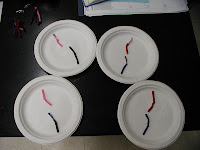Responding to GATTACA Quote
"I was never more certain of how far away I was from my goal than when i was right beside it."
While Vincent was scrubbing and cleaning at the facility, he realized that he really might never reach his goal. He realized that it was now literally impossible to get a land an ideal occupation with the new technology that is used in all jobs of the future. Invalids are destined to be low paying jobs until they die off from disease or age. Vincent had little hope but still kept his dreams alive by never giving up.













